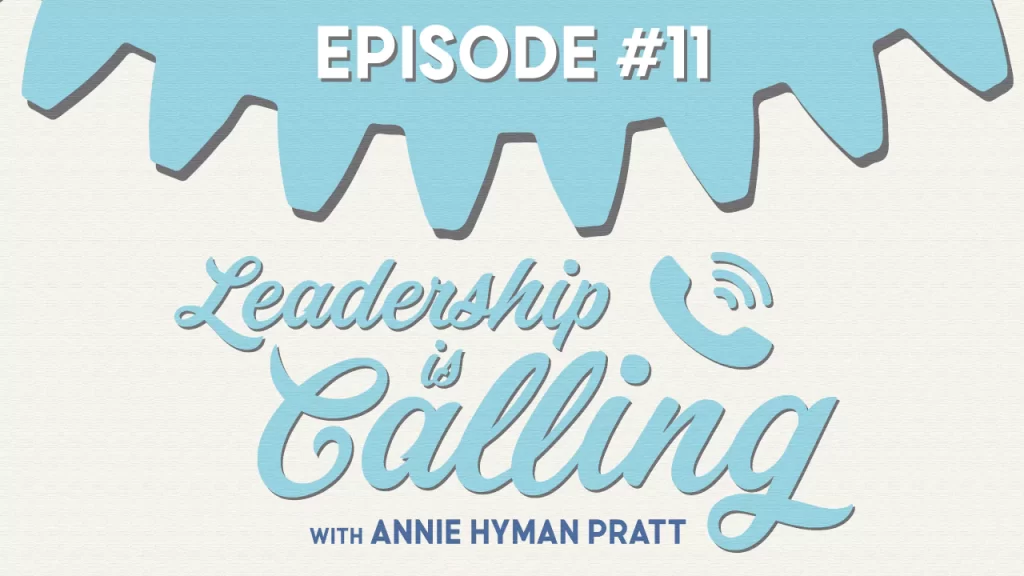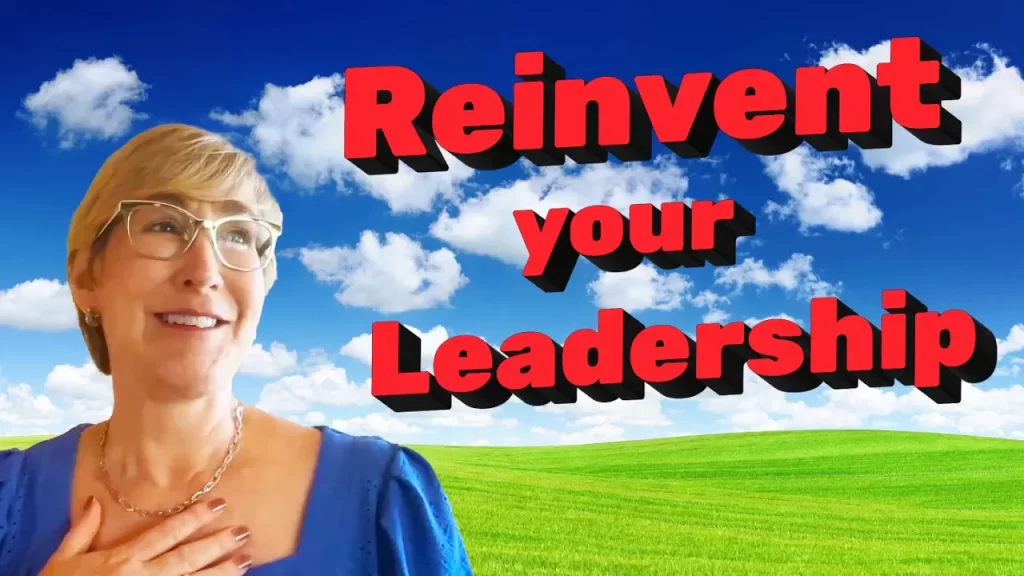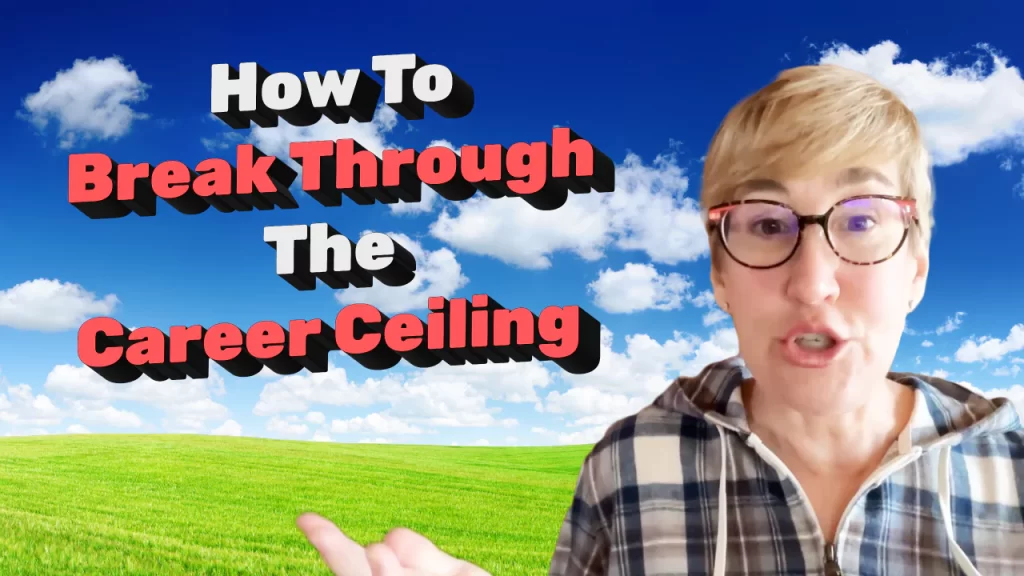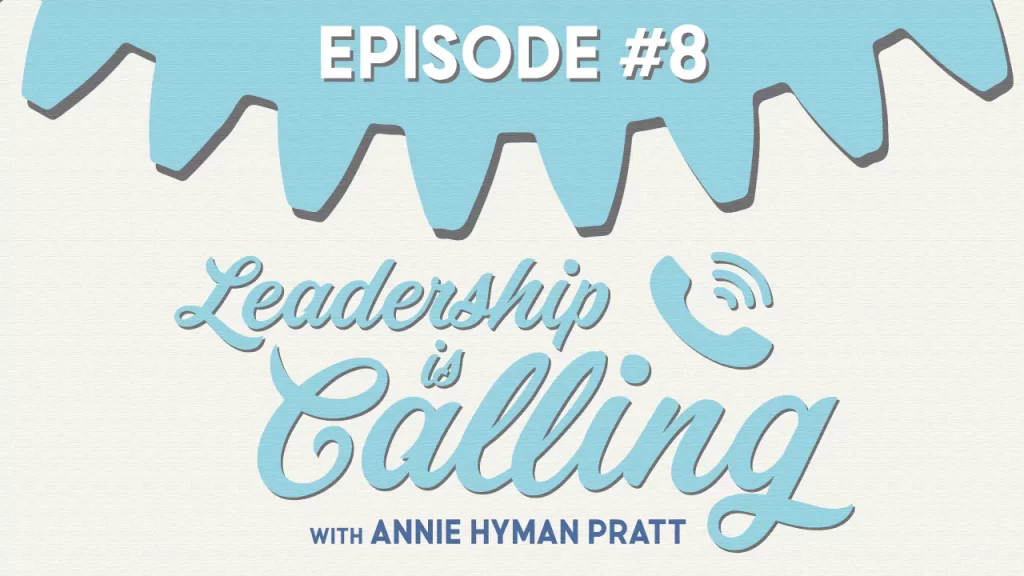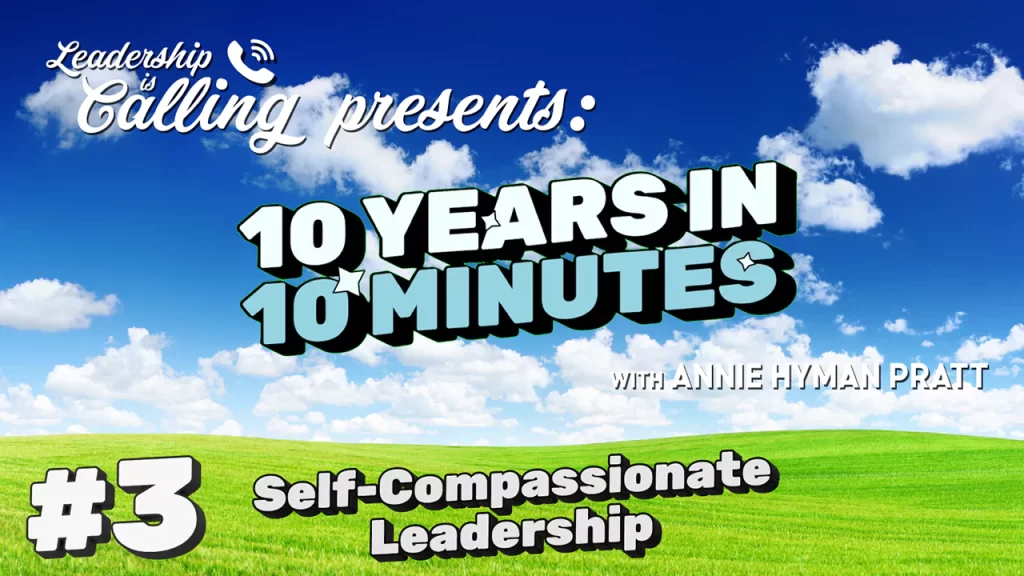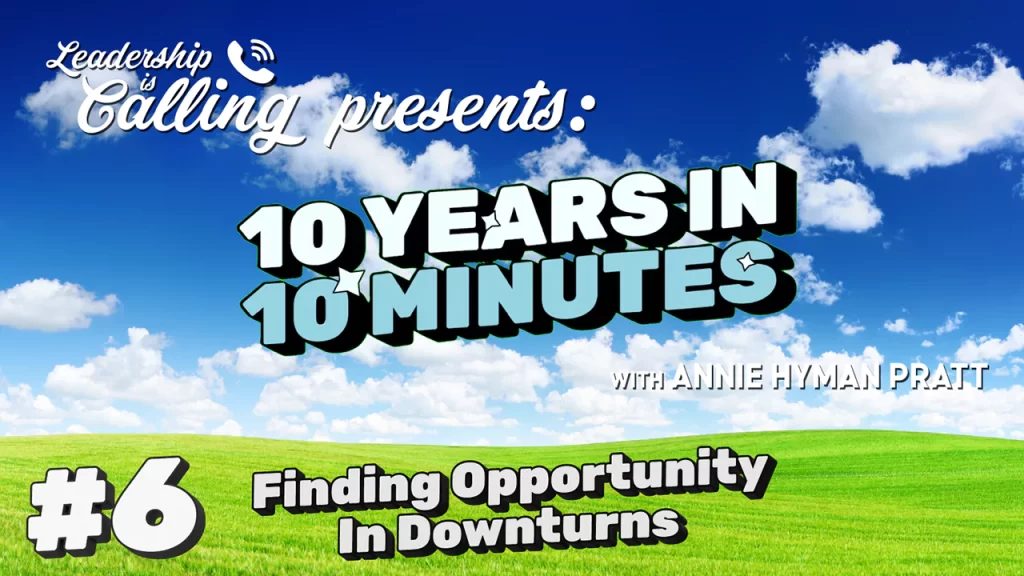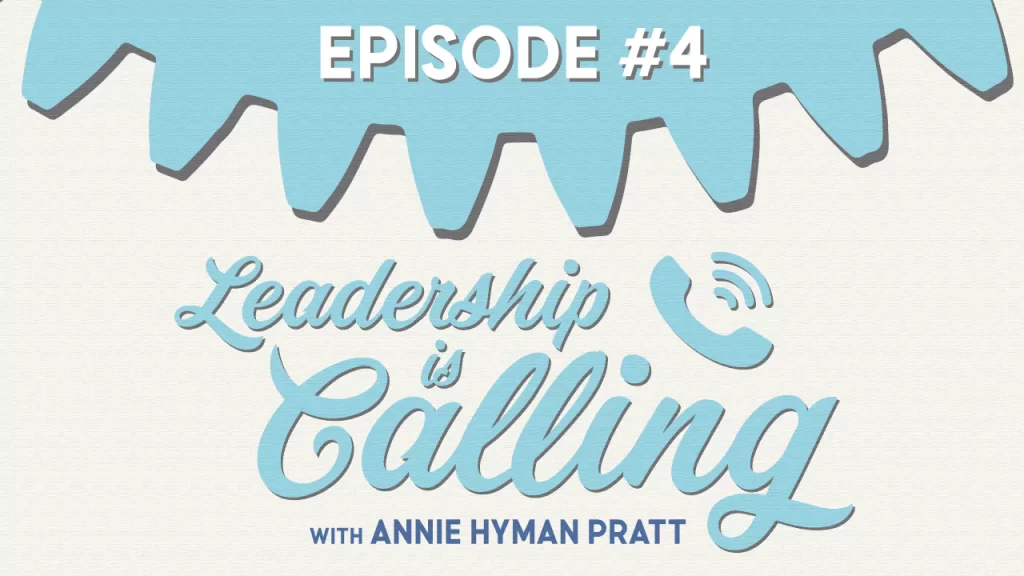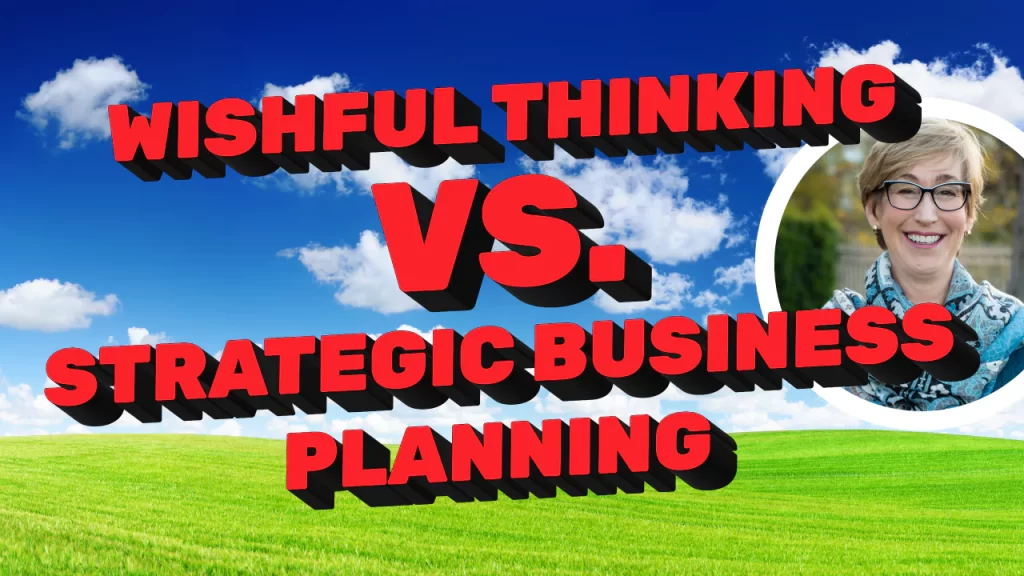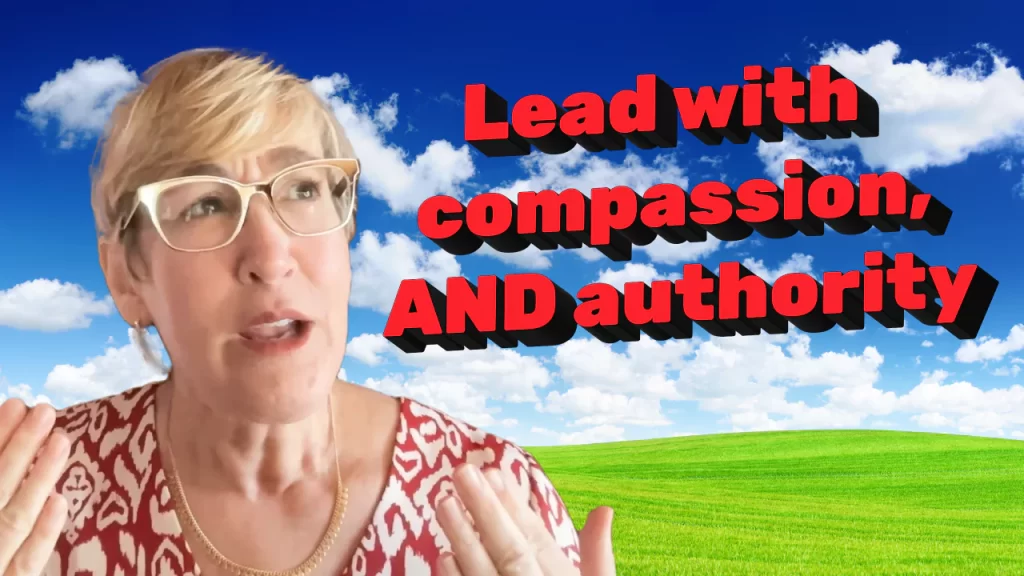Episode #36: SOAR: A Formula for Entrepreneurial Success
Leadership is Calling Episode #36
Annie Hyman Pratt
- Description
- Transcript
SOAR: A Formula for Entrepreneurial Success
“This is how you move from authority to influence and collaboration – to build extraordinary teams, not just yourself.” -Annie
Do you ever feel like your leadership style has hit a wall, even as your company keeps growing? Are you ready to take your team to the next level, but not sure how?
Success requires moving from authority to collaboration. Master the SOAR Framework to build extraordinary teams.
In this video, Annie dives further into the SOAR Framework, a proven formula for entrepreneurial success. SOAR stands for Self-Leadership, Outcome Focus, Agreements, and Relationships.
In this video, you will learn:
- How to master self-leadership and overcome your emotional reactivity.
- How to focus on outcomes and align your team around a common goal.
- How to create agreements that build trust and enable collaboration.
- How to build secure relationships that allow your team members to thrive.
- If you are an entrepreneur who wants to take your business to the next level, then this video is for you. Watch now and learn how to SOAR!
Key Points
- Self-leadership means managing your emotions and thinking independently.
- Keep the end goal in mind and align people to desired outcomes.
- Make agreements, not demands, so people feel empowered.
- Build secure, high-trust relationships where teammates have each other’s backs.
Related Resources
Leadership Skills: Self-Leadership | The People Part
Leadership Development Articles: The Control Trap! | True Collaboration: The Best Results Are Team Driven
Downloadable Leadership Tool: The 5-Day Appreciation Journal: A Culture of Caring

Auto-Generated Transcript – unedited version
SOAR: A Formula for Entrepreneurial Success
What do you need to make that transition from authority and control to influence and collaboration? What has to happen? What are those skills that most entrepreneurs don’t have? And by the way, the skills that did not get them here really are authority and control and how amazing and outstanding they are as individuals that got them here. But now we need them to work through inflow and collaboration so that other people can be outstanding and amazing and get them to the next spot. So we have an acronym for that and we call it SOAR.
So the S stands for self leadership, and I can’t overstate it’s importance. Self leadership is all about not being driven that your behavior, your thoughts and your behaviors are not driven by your emotions. So self leadership means that I can have emotions, but I can take independent action. I can think just fine and take the actions and be and you know, and think the thoughts that I want to think without being in emotional reactivity, right? That I’m not emotionally reactive. And emotional reactivity is when you’re thinking or behaving in ways that come from self-protection.
And I would say that it’s like, you know, we would think of it as our kind of fight, flight, freeze, please use all of those kinds of reactions that are hardwired, self-protective reactivity is hardwired. It is. It takes almost no energy like we have this amygdala. It sits on top right on top of our brainstem. It’s like you know, that all of our senses bring in information. It gets on this superhighway to the amygdala. And the amygdala makes a call without us thinking at all of is this a threat or not? And it is hyper effective that it sees threats where there are none. It sees, you know, potential threats that in today’s day and age are not threats at all? I think that we were designed for a time where most threats were physical. Now we’re in a time where threats are psychological.
So when you might be in a meeting and your boss rolls their eyes while you’re talking, that your amygdala is going to tell, you know, kind of puts you into reactivity right away or like, that’s a threat. It’s like, did my boss just disrespect me? Do they think badly of me? Do they think I just gave a bad idea or are they going to take me off this project? Are they going to fire me and my, you know, my not in a good place here. So all of that kind of reactivity, things like blame when we’re in a place of blame, judgment, criticism, fear, anxiety, hiding, overwhelm, resisting defensiveness, all of that, all of that is self-protective thoughts and behaviors self-protective.
Okay, when we’re in self-protection, we cannot. I think we literally are not driving our behavior. Our behavior, our amygdala is driving us. We are just reacting based on our emotions. And so we need to learn how to master our regulating our emotions, how to get ourselves from self-protection back into self leadership. So that we can interact with people in positive thinking, you know, effective ways. We have to have this. And it’s it’s the kind of thing of that I wish we taught even more in preschool, you know, and all throughout school, actually, because, you know, we do we teach a little bit of kind of self-restraint of, you know, you don’t hit people and, you know, and try to treat others as you want them to treat you. I know we do that, but we don’t teach people how to handle emotions. And it’s hard. It’s hard and we can’t turn them off. It’s not possible.
So we need to get ourselves to a place where we can handle difficult emotions. We know what to do with them. They are not, you know, having they are not driving our behavior. And if we have a team that doesn’t drive our behavior to do things like, say, you know, that was the worst mistake I’ve ever seen. Or, you know, from now on you have to bring all that stuff to me because that was the dumbest mistake ever. You know, like, we need to be the kind of leaders that can think before we speak and and really interact in a way that gives our team members the best chance of succeeding from here. And that is never going to be blame, judgment, criticism, defensiveness, etc… It’s never going to be that. So we need to get this part down first. That’s the first thing.
The second piece of saw is the O, then it stands for outcome focus. If you’ve ever seen me speak, you’ll know I’m constantly talking about outcomes. What’s the outcome? And the thing about business is that we come together to achieve outcomes. That’s like the point of business. And so when we’re working together as a team, that outcome focus is our destination, that, you know, those outcomes are what we’re all going for together. It is the thing that we have in common. We all may be, you know, extremely different from each other and, you know, in every part of life except this, that we’re both going for these business outcomes. And to keep that in mind and keep realigning to that, to do our thinking based on knowing what we’re going for is game changing. And when we don’t have that, it’s almost impossible to stay out of conflict problems, power struggles, etc… because then we’re focused on us as individuals being successful against each other instead of being with each other to achieve, you know, the bigger, the bigger goal.
So then the third part of the acronym, the A stands for agreements. And this is where I think that when I think of influence, I immediately think of agreements because when you’re in a kind of a command control and authority model, you’re making demands, you’re giving, you know, strong directions. You’re telling what they’re going to do, okay, in agreements, we work it out together. We know we have a goal and we’re going to negotiate and really figure out what is the best thing for me to do to help contribute to this goal. What’s the best thing for you to do? And if something changes, we’re going to renegotiate, because the whole point of agreements is that each of us can optimize for what we have going on.
Each of us can be a thinking node in our business like, Hey, you know what? I’m you know, I’m a resource and I’m using some resources. And I really think that if I did it this way, that would be better for all of us. And then the CEO doesn’t have to think of that. It’s game changing and we need people to be able to make agreements they’re confident they can keep, because if they’re getting a bunch of demands, that’s it’s it’s that puts them in a place of well, you know if I don’t have a say in how this is going to happen, I’m going to disappoint you and I won’t have any any ability to not do that. It’s like we need to work together through agreements. It’s game changing, just game changing.
And then the last of the saw acronyms is the R, and it stands for relationships and IRC and relationships and business are fascinating to me because what we’re going for in these relationships is that they’re secure. So what I mean by that is not that, you know, that an entrepreneur or a team member are each other’s best friends and that they know everything about their kids and their families. Although it’s fine if they do, it’s fine. Totally fine. But what we’re really going for is that on the team that we all trust each other to have each other’s backs, that we trust that my teammates, when they make decisions, when they go to take actions, that they won’t do so without thinking about how it impacts me, that they won’t do things only in their self-interest. That hurts my ability to contribute to the outcome, to do the parts that I’ve agreed to do.
And with that, why we need them to be secure is because it’s the same reason that I was talking about earlier with CEOs that can be emotionally reactive, where the team is trying to make sure they’re okay. If I don’t trust that my team members have my back, I have to spend so much time trying to figure out what they are doing. And it is, is it going to harm me? And the more time I have to spend on that, the less time I have to actually work on my projects and tasks and do the strategic thinking needed to achieve outcomes.
So we need these relationships to be very secure. You know, another way of saying that is high trust, but the trust is that I can trust that this other person will look out for me. That’s the trust. I can trust their behavior. I can trust that they will keep my interests in mind. And it is oh, my gosh, it’s the foundation of working together. Because, again, if you don’t have that, then, you know, I’m sure everybody here has been on a team where, you know, you can see people are competing hard core with each other and they’re you know, they’re they are completely self-interested. And, you know, and some people are winners and some people are losers in those businesses. And that is not good for the business. We want everybody to be working together. Everybody’s a winner because we’re going to achieve the outcomes together.
So this is so important and this is the way through that invisible brick wall. This is the way that you move from authority and control to, you know, influence and collaboration to actually working in a team where they are extra and they get to do extraordinary things, not just you, not just you. So yeah, so that’s how this works.





